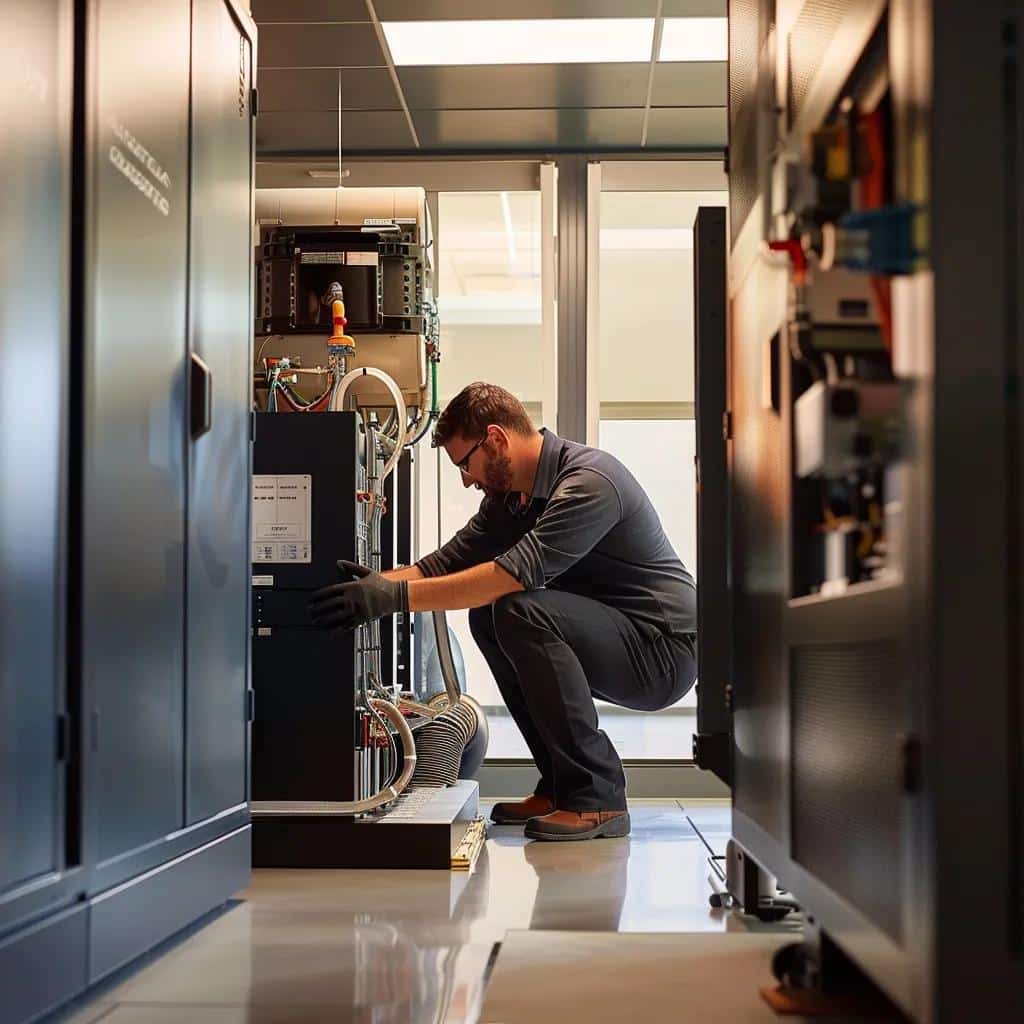
10 Easy Commercial HVAC Maintenance Strategies to Boost System Durability
If you manage a commercial building, data center, or large office space, you already know that your commercial HVAC system does a lot of heavy lifting. From balancing indoor humidity and airflow to maintaining ideal climate conditions year-round, your HVAC units keep customers comfortable and employees productive.
But without routine maintenance, your system’s reliability can drop fast—and so can your bottom line.
1. Start with the Basics: Maintenance = Long-Term HVAC Health
Why is HVAC maintenance a must? Because breakdowns cost time, energy, and money.
✅ Catch minor repairs before they escalate
✅ Extend the lifespan of your air handler, compressor, and condenser
✅ Lower energy costs with efficient performance
✅ Improve indoor air quality and comply with commercial building codes
Whether you’re overseeing a construction project, operating a retail space, or managing a healthcare facility, regular maintenance protects your investment.
2. Build a Preventive Maintenance Schedule That Works
Don’t wait for an emergency to strike. Set a preventive maintenance schedule that includes:
- Air filter changes
- Cleaning coils and ductwork
- Checking refrigerant levels and adjusting charge
- Inspecting belts, motors, and ventilation paths
- Testing heat exchangers and pilot lights
Using CMMS software (Computerized Maintenance Management System) helps track all maintenance activity and can automate reminders for future service dates.
3. Conduct Monthly Inspections to Stay Ahead
Regular inspections help you avoid surprise system failures.
Watch for:
- Dirty or clogged air filters
- Leaks in refrigerant lines
- Unusual noise from fans or motors
- Weak airflow in ducts or vents
- Blinking thermostat errors or control malfunctions
4. Don’t Forget Calibration—It Makes a Big Difference
Calibrating system components ensures better energy use and performance.
Adjust:
- Thermostat settings
- Airflow control dampers
- Split system refrigerant levels
- Variable refrigerant flow (VRF) unit parameters
Studies show even a small error in calibration can increase fuel and electricity usage by 10%—and no one wants that on their utility bill.
5. Use Smart Technology and Diagnostic Tools
Today’s HVAC technology has come a long way. Smart systems monitor and report on:
- Fan performance
- Heat pump operation
- Chiller status
- Humidity levels
- Real-time temperature and climate analytics
By leveraging these building automation features, you’ll catch issues early, minimize service interruptions, and support sustainability goals.
6. Train Your Technicians for Peak System Performance
Even the best commercial HVAC systems are only as good as the people maintaining them.
A certified technician can:
- Troubleshoot with precision
- Follow detailed maintenance checklists
- Manage emergency service calls quickly
- Recommend when to repair vs. replace components
Companies that invest in technician education see fewer mistakes, better customer service, and improved system durability.
7. Centralize Everything with CMMS and Building Automation
Still managing your HVAC tasks on spreadsheets? There’s a better way.
A modern CMMS solution helps by:
- Organizing inspections and repairs
- Tracking equipment performance
- Logging parts replacements
- Sending automatic maintenance alerts
Plus, integrating CMMS with your building automation system ensures seamless communication between your tech team and your HVAC control units.
8. Extend Equipment Life with These Pro Moves
Want your HVAC units to last longer?
Start here:
- Replace worn air filters, belts, and compressors on schedule
- Use corrosion-resistant coatings on exposed components
- Add vibration dampers to protect sensitive parts
- Install high-efficiency upgrades (especially in packaged rooftop units)
ASHRAE research shows these steps can extend a commercial heating or cooling system’s lifespan by up to 30%.
9. Balance Upfront Costs with Long-Term Efficiency
Being proactive doesn’t have to mean overspending.
Smart business owners know how to:
- Evaluate energy ROI before every equipment upgrade
- Replace underperforming boilers, furnaces, or split systems strategically
- Use predictive analytics to prevent downtime
- Monitor climate control settings to avoid overuse
10. Learn from Real-World Success Stories
Take it from other Columbus-based businesses.
One data center we worked with reduced HVAC repair costs by over 35% in a single year—just by combining inspections, diagnostics, and preventive maintenance.
Another commercial client upgraded to a VRF system with smart sensors, cutting their energy use and improving indoor air quality significantly.
Frequently Asked Questions
Q: What’s the benefit of regular HVAC maintenance? A: It keeps your commercial HVAC system efficient, extends lifespan, and prevents emergency repairs.
Q: How often should I change my air filters? A: Every 1–3 months depending on usage and air quality needs.
Q: What kind of equipment do you service? A: Everything from boilers, chillers, and heat pumps to packaged rooftop units, VRF systems, and more.
Q: Do I need a professional technician? A: Yes—trained techs ensure proper calibration, accurate repairs, and warranty compliance.
Q: What’s the easiest way to get started? A: Call us to schedule a system evaluation and create a custom maintenance plan.
Contact Ohio Heating for Expert HVAC Services
Keeping your commercial HVAC system in peak condition doesn’t have to be complicated. Whether you’re managing construction, retail, or commercial projects, preventive care keeps your equipment efficient and your customers happy.
Stay efficient. Stay operational. Stay ahead—with Ohio Heating by your side.
